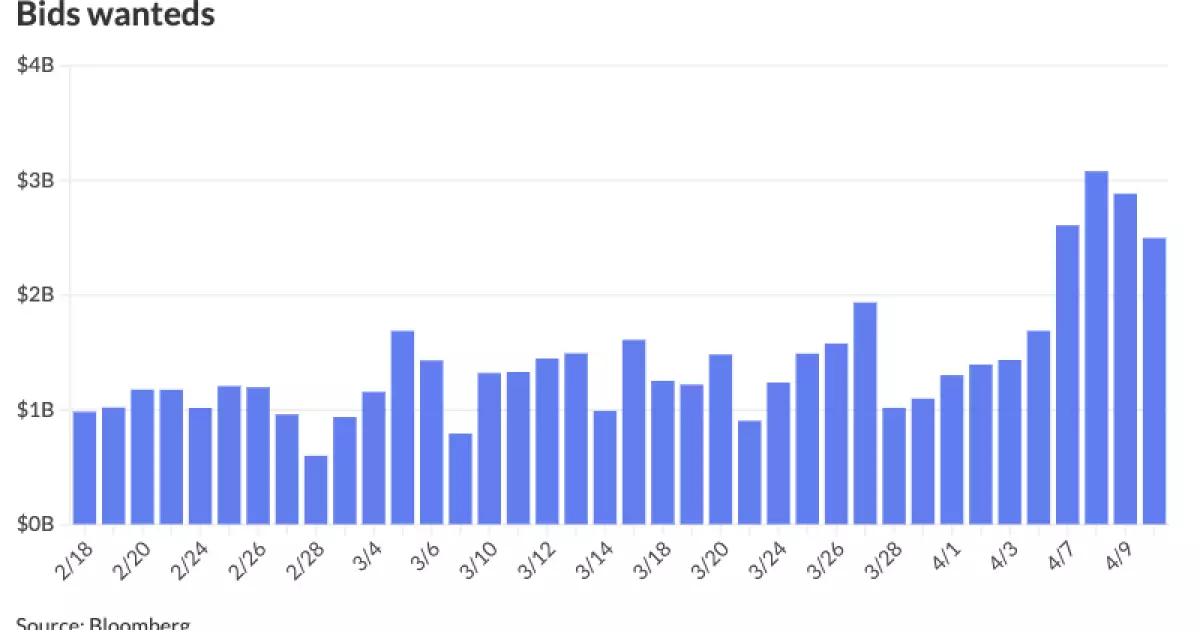The municipal bond market is currently facing unprecedented volatility and turmoil, primarily exacerbated by the aftereffects of President Donald Trump’s trade tariffs. A swelling wave of uncertainty hangs over financial markets, driven by fiscal policies that appear reactive rather than strategic. This turbulence is marked by a steep rise in yields for municipal bonds. Investors, caught off guard by a fluctuating market landscape, are responding with forced selling. The ripple effects can be felt across various asset classes, and this presents a pivotal moment for many in the investment community.
In recent days, a staggering 45 basis point surge in 10-year U.S. Treasury rates has unsettled the bond market. When high-quality municipal bonds also experience significant sell-offs, one must question the stability of the entire financial system. Uncertainty around monetary policy, coupled with heightened tax-exempt supply, creates a treacherous environment for investors. This raises crucial questions: Are we witnessing a market correction, or is this a precursor to a more systemic issue?
Historical Context: Echoes of Past Volatility
Drawing a parallel between today’s sell-off and similar historical events adds a chilling layer of context. Barclays strategists recently pointed out that this week has seen some of the largest daily sell-offs in the past 15 years. The mention of the pandemic’s market effects resonates deeply; such drastic fluctuations can only be genuinely understood through the lens of similar crises. Traders and investors looking for safety often move toward high-quality municipal bonds, but the recent chaos reflects a critical departure from that trend.
Moreover, September’s historical losses echo that of the early days of COVID-19. Lessons from the past teach us that these rough patches can eventually yield buying opportunities; however, one cannot ignore the fact that it took considerable time for market stabilization during those periods. Thus, it seems folly to believe current conditions will resolve any quicker, especially given the considerable headwinds facing investors.
The Complexity of Underwriting in a Volatile Environment
In this complex market landscape, underwriting new issues has become a Herculean task. The week of April 14 is projected to yield nearly $9 billion in issuance, but historical volatility looms large over these figures. Potential backlogs of delayed deals and a significant drop in market liquidity complicate the process even further. Capital commitments from banks and underwriters are likely to be stifled, as many institutions are understandably hesitant to expose themselves to assets whose values may plunge the following day.
As Jock Wright, an underwriter at Raymond James, aptly noted, we are approaching a “deal by appointment” market. Such an environment not only devalues capital assets but also discourages participation on the part of new investors. If underwriters are hesitant to engage due to fear of absorbing financial losses, the result may be a stagnant municipal bond market that strangles the flow of liquidity essential for economic growth.
Emerging Opportunities Amidst Chaos
While the challenges seem daunting, one must also evaluate the silver linings emerging from this crisis. Historical trends show that the municipal high-yield sector has recently outperformed its investment-grade counterparts, providing new avenues for returns. A possible shift in investment strategy might involve a keen eye on low-rated bonds that could present untapped opportunities. As fear drives many to the exits, a forward-looking investor could find value hidden within under-appreciated sectors of the market.
Furthermore, as liquidity washes away from the high-grade domain, investors with an understanding of market timing could find themselves correctly positioned when stabilization inevitably occurs. History often teaches us that sharp sell-offs can pave the way for recovery; those who can withstand the tumult may reap rewards when the dust settles.
The municipal bond market stands at a crossroads, caught between the twin perils of policy missteps and macroeconomic strains. Now more than ever, investors must navigate their tactics with astuteness and caution. The turbulence is undeniably unsettling, yet within each crisis lies the potential for transformative growth. Those who can analyze trends, adapt strategies, and recognize new opportunities amidst chaos will not only survive but may ultimately thrive in the face of adversity.

